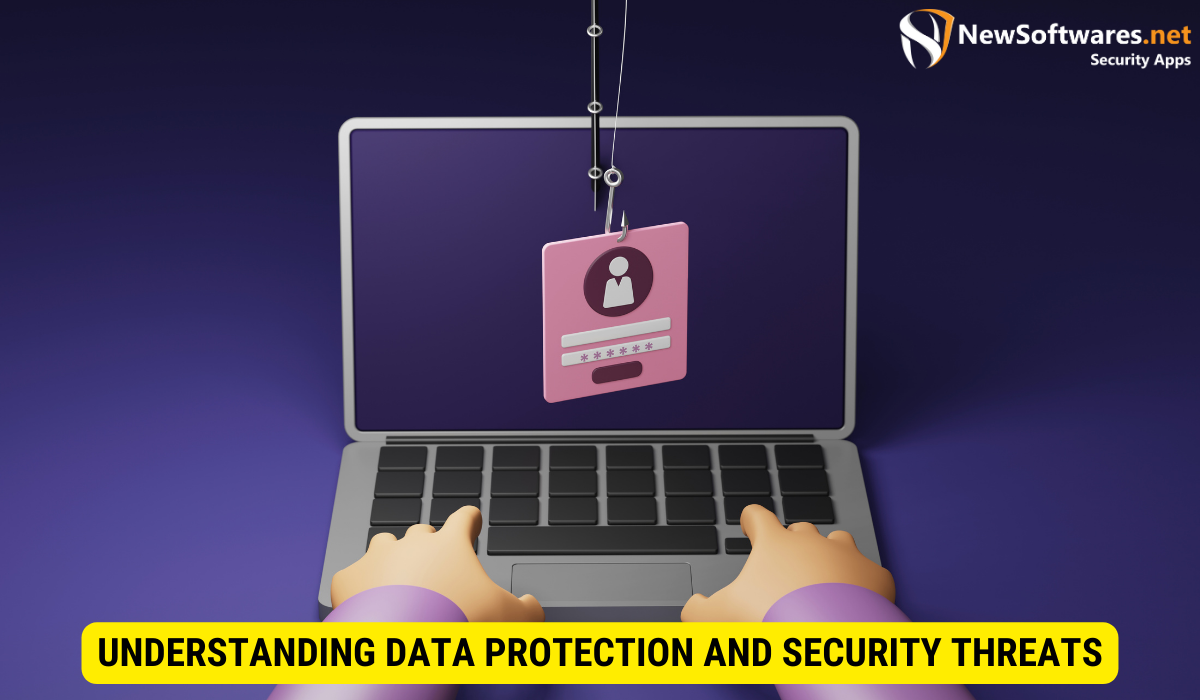Security maturity models play a vital role in enhancing data protection and mitigating threats by providing a structured framework for organizations. These models help in:
- Evaluating Security Capabilities: They assess an organization’s current security posture, identifying strengths, weaknesses, and improvement areas.
- Defining Improvement Roadmap: The models define levels or stages of security maturity, guiding organizations in developing a targeted action plan for enhancing their security measures.
- Implementing Best Practices: By following these models, organizations can implement industry-standard best practices, robust policies, and procedures for data handling and access.
- Prioritizing Security Initiatives: They enable organizations to prioritize security initiatives based on their current maturity level, ensuring efficient resource allocation.
- Mitigating Threats: Security maturity models guide in proactive identification and mitigation of vulnerabilities and improving incident response capabilities.
- Continuous Improvement: These models serve as a roadmap for continuous improvement in data protection efforts, adapting to emerging threats and technological advancements.
In today’s digital age, data protection has become a paramount concern for organizations across various industries. The constantly evolving landscape of cyber threats and attacks necessitates the implementation of robust security measures to safeguard sensitive information. I will explore the role of security maturity models in enhancing data protection and mitigating threats. By understanding the importance of data protection, common security threats, and the evolution of security maturity models, organizations can effectively implement these models to optimize their data protection efforts.
Understanding Data Protection and Security Threats

Data protection refers to the practices and measures employed to safeguard data from unauthorized access, loss, corruption, or destruction. It encompasses the security of both physical and digital assets, ensuring the confidentiality, integrity, and availability of valuable information. The proliferation of digital transformation and the growing reliance on technology have exposed organizations to a plethora of security threats.
The importance of data protection cannot be overstated. Data breaches can lead to severe financial and reputational damage, legal and regulatory non-compliance, and the loss of customer trust. Organizations must proactively identify and address security threats to prevent data breaches and minimize their impact.
The Importance of Data Protection
Data protection is crucial for several reasons:
- Confidentiality: Ensuring that sensitive information remains accessible only to authorized individuals.
- Integrity: Guaranteeing the accuracy and completeness of data, preventing unauthorized modifications or tampering.
- Availability: Ensuring that data is accessible and usable when needed, thus preventing downtime and disruptions.
- Compliance: Complying with legal and regulatory requirements pertaining to data protection, privacy, and security.
- Customer Trust: Demonstrating a commitment to protecting customer data, building trust and loyalty.
Common Security Threats in Today’s Digital Age
Organizations face an array of security threats, including:
- Malware: Malicious software designed to infiltrate systems, steal data, or disrupt operations.
- Phishing: Deceptive techniques that trick individuals into divulging sensitive information such as usernames, passwords, or financial details.
- Ransomware: A type of malware that encrypts data until a ransom is paid, often causing significant financial and operational damage.
- Insider Threats: Risks posed by individuals with authorized access who intentionally or unintentionally compromise sensitive data.
- Advanced Persistent Threats (APTs): Sophisticated and targeted attacks aimed at high-value targets, often originating from nation-state actors.
Introduction to Security Maturity Models
To effectively address security threats and enhance data protection, organizations can leverage security maturity models. These models provide a structured framework for assessing an organization’s security capabilities, identifying gaps, and defining a roadmap for improvement. They help organizations gauge their security maturity level, benchmark their practices against industry standards, and prioritize investments in security initiatives.
Defining Security Maturity Models
A security maturity model is a framework that provides a structured approach to evaluating an organization’s security posture. It typically consists of predefined levels or stages that represent different degrees of security maturity. These models assess various dimensions of security, including policies, processes, technologies, and people, allowing organizations to identify areas of strength and weakness.
The Evolution of Security Maturity Models
Security maturity models have evolved over time to keep pace with the changing threat landscape and the emergence of new technologies. Initially, they focused primarily on technical controls and compliance. However, modern security maturity models have expanded to include a broader range of domains, such as governance, risk management, and incident response. Organizations now have access to comprehensive frameworks that encompass all aspects of security.
The Connection Between Data Protection and Security Maturity Models
Security maturity models play a crucial role in enhancing data protection efforts within organizations.
How Security Maturity Models Enhance Data Protection
Security maturity models provide organizations with a holistic view of their current security capabilities and the steps needed to improve their data protection. By following the framework outlined in a maturity model, organizations can:
- Identify and prioritize security initiatives based on their current maturity level
- Implement best practices to strengthen data protection measures
- Establish robust policies and procedures for data handling and access
- Implement appropriate security technologies and controls
- Develop a culture of security awareness and accountability among employees
The Role of Security Maturity Models in Threat Mitigation
Security maturity models help organizations mitigate threats by:
- Enabling proactive identification and mitigation of security vulnerabilities
- Providing a structured approach to evaluating and improving incident response capabilities
- Guiding organizations in implementing appropriate security controls to address identified risks
- Benchmarking against industry standards and best practices to ensure effective threat mitigation
- Serving as a roadmap for continuous improvement in data protection efforts
Implementing Security Maturity Models for Optimal Data Protection
Implementing a security maturity model requires a structured approach and collaboration across various functions within an organization.
Steps to Implementing a Security Maturity Model
The implementation process typically involves the following steps:
- Assess Current Security Posture: Conduct a comprehensive assessment of the organization’s current security capabilities, identifying strengths, weaknesses, and areas for improvement.
- Define Target Maturity Level: Determine the desired security maturity level for the organization, aligning it with business objectives, industry standards, and regulatory requirements.
- Develop an Action Plan: Create a roadmap for enhancing security maturity, outlining the specific initiatives, resources, and timelines required to achieve the target maturity level.
- Implement Security Initiatives: Execute the action plan, implementing the identified security initiatives and continuously monitoring progress.
- Monitor and Adjust: Regularly monitor the effectiveness of implemented initiatives, making necessary adjustments based on changing threats, business requirements, and technology advancements.
Overcoming Challenges in Security Maturity Model Implementation
Implementing a security maturity model may pose challenges, including:
- Resistance to Change: Overcoming resistance to adopting new security practices and technologies within the organization
- Resource Constraints: Allocating sufficient resources, including budget and personnel, to implement security initiatives
- Complexity: Dealing with the complexity of interconnected security domains and technologies
- Ensuring Alignment: Ensuring alignment between security initiatives and business objectives
- Maintaining Momentum: Maintaining ongoing commitment and momentum for continuous improvement
Future Trends in Data Protection and Security Maturity Models

The field of data protection and security maturity models is continuously evolving to keep pace with emerging threats and technological advancements.
Predicted Developments in Data Protection Strategies
Experts predict the following developments in data protection strategies:
- Artificial Intelligence (AI) and Machine Learning (ML): Leveraging AI and ML technologies to detect and respond to threats in real-time.
- Zero Trust Architecture: Shifting from a perimeter-based security approach to a zero trust model, where trust is not automatically granted to any user or device.
- Data Privacy Regulations: Strengthening data privacy regulations globally, requiring organizations to implement robust data protection measures.
- Cloud Security: Enhancing security measures specific to cloud-based environments, addressing unique challenges and risks associated with cloud adoption.
- Collaborative Threat Intelligence: Sharing threat intelligence and collaborating with industry peers and government entities to combat cyber threats collectively.
The Future of Security Maturity Models in Threat Mitigation
Security maturity models will continue to play a vital role in organizations’ threat mitigation efforts:
- Integration with Emerging Technologies: Incorporating emerging technologies, such as AI and ML, into security maturity models to ensure relevance and effectiveness in addressing new threats.
- Alignment with Industry Standards: Continuously evolving security maturity models to align with evolving industry standards and best practices.
- Metrics and Measurement: Enhancing the measurement and reporting capabilities of security maturity models to provide more accurate insights into an organization’s security posture.
- Focus on Resilience: Expanding the scope of security maturity models to encompass resilience, enabling organizations to withstand and recover from cyber attacks effectively.
- Continuous Improvement: Facilitating a culture of continuous improvement in data protection and security practices through regular assessments and actionable recommendations.
Key Takeaways
- Data protection is crucial for organizations to ensure confidentiality, integrity, availability, compliance, and customer trust.
- Security threats, such as malware, phishing, ransomware, insider threats, and APTs, pose significant risks to an organization’s data.
- Security maturity models provide a structured framework for assessing an organization’s security capabilities and enhancing data protection.
- Implementing a security maturity model involves steps like assessing the current security posture, defining a target maturity level, and developing an action plan.
- The future of data protection and security maturity models will involve emerging technologies, data privacy regulations, and collaborative threat intelligence.
FAQs
1. How do security maturity models enhance data protection?
Security maturity models enhance data protection by providing a structured framework for assessing an organization’s security capabilities, identifying gaps, and defining a roadmap for improvement. They help prioritize security initiatives, implement best practices, and establish robust policies and procedures for data handling and access.
2. What are the common security threats organizations face in today’s digital age?
Organizations face common security threats such as malware, phishing, ransomware, insider threats, and advanced persistent threats (APTs). These threats can result in data breaches, financial loss, regulatory non-compliance, and reputational damage.
3. How can organizations implement a security maturity model?
Implementing a security maturity model involves steps like assessing the organization’s current security posture, defining a target maturity level, developing an action plan, implementing security initiatives, and regularly monitoring and adjusting the progress.
4. What are the predicted developments in data protection strategies?
Experts predict developments in data protection strategies that include the use of artificial intelligence (AI) and machine learning (ML), adoption of zero trust architecture, strengthening of data privacy regulations, enhancing cloud security measures, and collaborative threat intelligence sharing.
5. What is the future of security maturity models in threat mitigation?
The future of security maturity models involves integration with emerging technologies, alignment with industry standards, enhanced measurement and reporting capabilities, a focus on resilience, and fostering a culture of continuous improvement in data protection and security practices.
Conclusion
Data protection is crucial in today’s digital landscape, where organizations face numerous security threats. Security maturity models provide a structured framework for evaluating an organization’s security capabilities, identifying gaps, and defining a roadmap for improvement. By implementing these models, organizations can enhance their data protection efforts, establish robust security practices, and mitigate the risks posed by evolving threats. As the field of data protection and security maturity models continues to evolve, organizations must adapt to emerging technologies, adhere to evolving regulations, and foster a culture of continuous improvement to safeguard their sensitive information.
